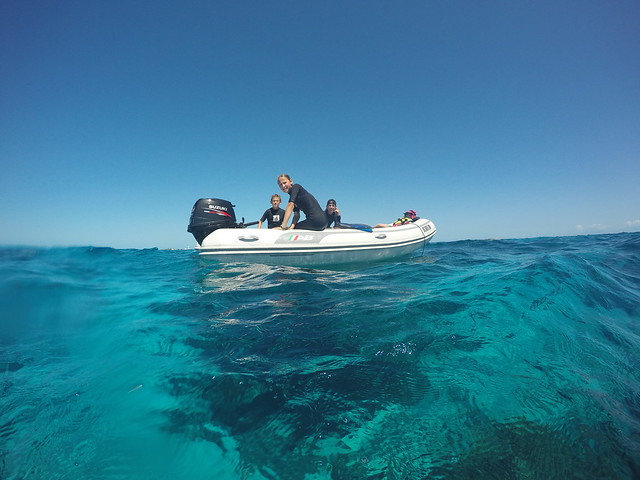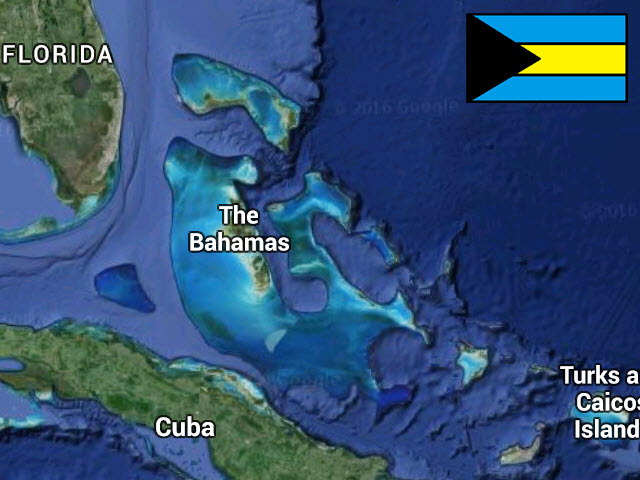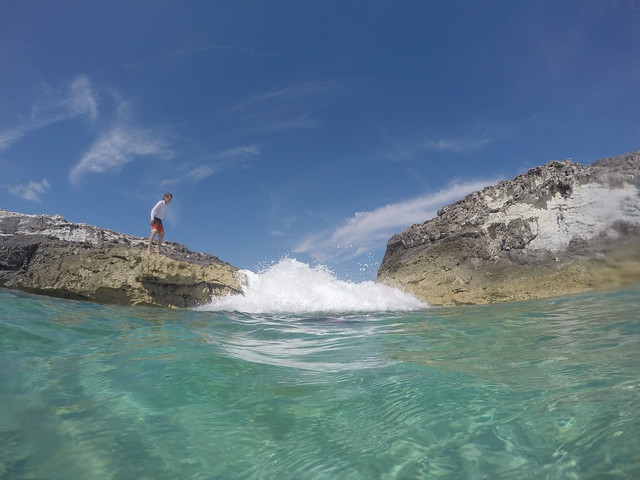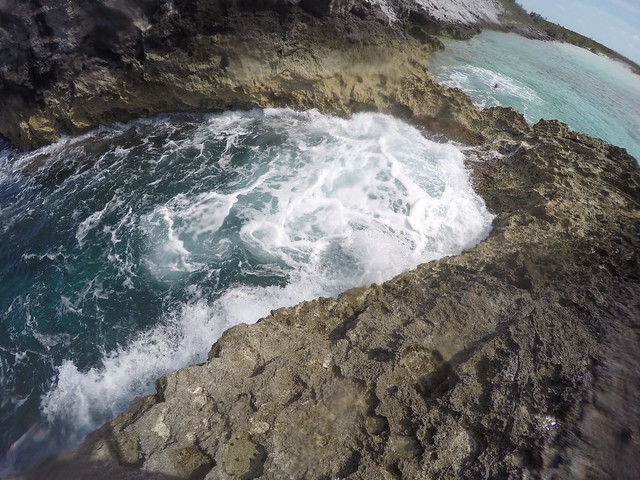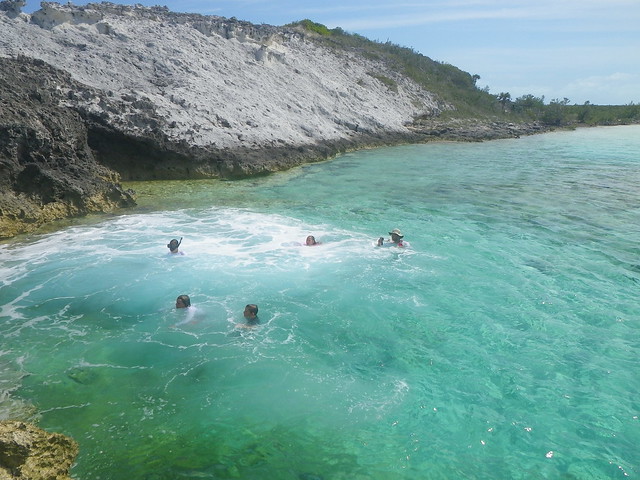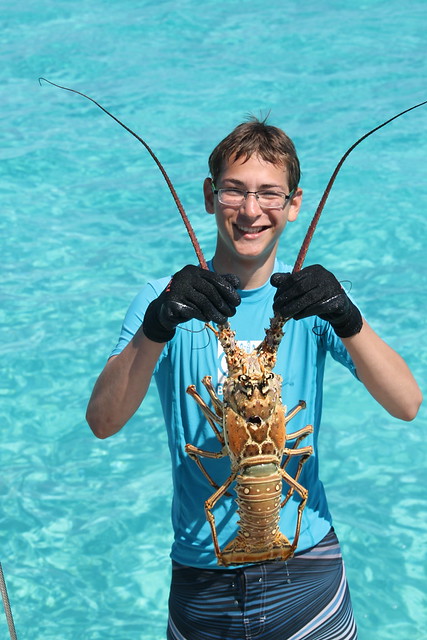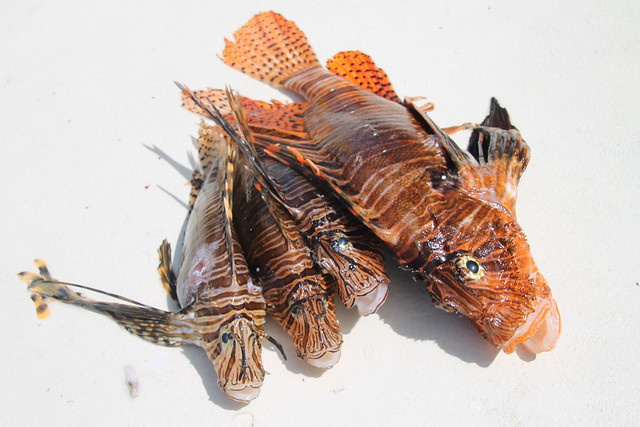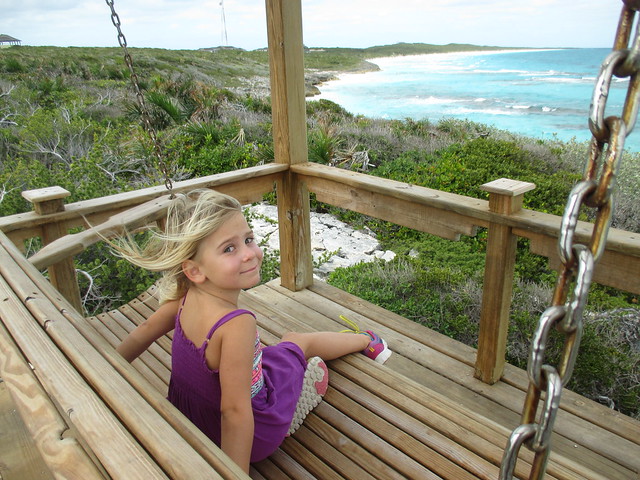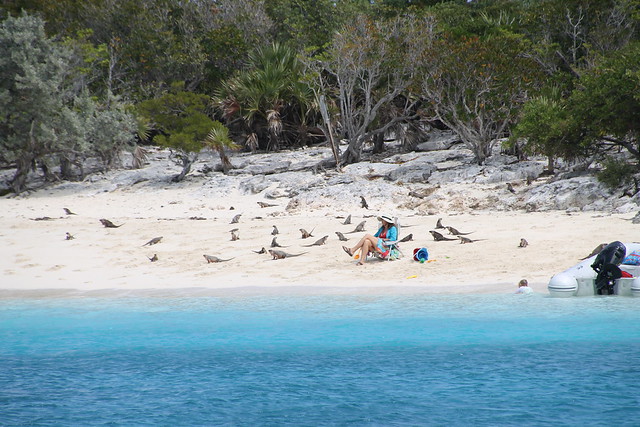This is the best passage we have ever made. Aside from finally perfecting the medication for kids who usually get seasick (after all the natural remedies failed to prevent misery), we had great sailing weather. Not that this was the predicted pattern—we were supposed to have a boring motor- crossing of the Gulf Stream. Instead, we sailed most of the time, even utilizing our spinnaker and new code zero. Of course, sailing weather means rougher seas, but also shorter passages. We dropped our mooring ball in Marathon at 4:30 pm on Thursday and dropped anchor in Chub Cay at 4:30 am on Saturday.
After resting up and going ashore to check in, we enjoyed a celebratory steak dinner (probably the last for a long while, as there are no cows in the Bahamas and only skinny little frozen strip steaks at island markets). The next morning, we sailed from Chub to Highborne Cay in a record 10 hours, averaging 7.3 knots! Again, this was supposed to be an easy day across the banks, but the wind cranked up so that we had to sail with a reefed main and switch the code zero for the jib at the half-way point. We arrived in light gale conditions and felt grateful to find a little cove to snug up in out of the wind and waves.
This trip also marks another turning point for our kids: all of them took a watch. Eli and Aaron stayed up late with me the first night, enjoying their first cups of on-watch coffee. Sam and Rachel stayed up the second night, sharing the captain’s chair, and Sarah manned the chair during many daytime hours. All of them participated in record-keeping, something at which we have historically been very bad. Our logs are in a disgraceful state, something we don’t really notice until we try to remember where we went when and how long a certain trip was. Of course, in the event of an electrical problem, you’re supposed to write down latitude, longitude, heading and boat speed so you could do dead-reckoning if necessary. Complete dependence on electronic charts and navigation equipment does not demonstrate good seamanship. To counteract our bad habits, I have printed up a log sheet to make keeping records a little easier. I submit a few samples so the reader can fill in what he might see when looking at the map of our passage.
Name Aaron Date 3/3/16 Time 2130
Sail Jib Motor Port
Wind Speed/Dir 15kts ESE Wave Height 2-3 ft Depth 600ft
Heading 90° Course (COG) 85° Speed (SOG) 5.6 kts
Latitude 24° 41.3’N Longitude 80° 39.7’W
Notes Cruise ships everywhere. Raised jib to sail. Tricolor not working, so we’re using the steaming light.
Name Eli Date 3/4/16 Time 0000
Sail Jib Motor
Wind Speed/Dir 23kts SE Wave Height 3-5 ft Depth >600ft
Heading 90° Course (COG) 85° Speed (SOG) 7.5 kts
Latitude 24° 43.9’N Longitude 80° 30.4’W
Notes Sailing in Gulf Stream. Seas rougher. Took an unusually large wave over starboard bow. Salt water leaked in master cabin, waking the captain. Also splashed in galley, flooding countertops.
Name Tanya Date 3/4/16 Time 0545
Sail Motor Port
Wind Speed/Dir 10kts W Wave Height 2-4 ft Depth >700ft
Heading 90° Course (COG) 70° Speed (SOG) 6.7 kts
Latitude 25° 36.9’N Longitude 79° 50.9’W
Notes Due to rough seas and wet bed, Jay and I are taking naps in cockpit in short shifts (2 hours). Waning moon. Seas becoming more comfortable.
Name Aaron Date 3/4/16 Time 1200
Sail Spinnaker Motor
Wind Speed/Dir 12kts W Wave Height 2-4 ft Depth >700ft
Heading 85° Course (COG) 85° Speed (SOG) 5.5 kts
Latitude 25° 13.0’N Longitude 79° 13.7’W
Notes Land sighted (South Riding Rocks. Sunny and pleasant. Fishing with squiddie. ETA on Great Bahama Bank around 1220
Name Sarah Date 3/4/16 Time 1445
Sail Main/Code Zero Motor
Wind Speed/Dir 9.5kts WNW Wave Height <2 ft Depth 13ft
Heading 77° Course (COG) 69° Speed (SOG) 3.8 kts
Latitude 25° 17.3’N Longitude 78° 58.0’W
Notes Calm, sunny day on the Banks. Mom playing ukulele. Dad making power and water.
Name Tanya/Eli Date 3/5/16 Time 0030
Sail Motor Stbd
Wind Speed/Dir 30kts E Wave Height 2-4 ft Depth 13ft
Heading 96° Course (COG) 85° Speed (SOG) 2 kts
Latitude 25° 28.3’N Longitude 78° 12.1’W
Notes Squalls and rain. Got Jay up early because of weather. Almost to waypoint. ETA at Chub Cay 0430.
Name Sarah Date 3/6/16 Time 1230
Sail Main/Code Zero Motor
Wind Speed/Dir 15kts NE Wave Height <2 ft Depth 70ft
Heading 117° Course (COG) 117° Speed (SOG) 9 kts
Latitude 24° 59.7’N Longitude 77° 32.1’W
Notes Chub to New Providence. Sailed across the tongue of the ocean. Sunny, cool, gorgeous day. Sam using a flying fish as bait for trolling. Just arriving on banks—depth went from 7000ft to 70!
Name Tanya/Rachel Date 3/6/16 Time 1630
Sail Reefed main/Jib Motor
Wind Speed/Dir 25kts NE Wave Height 4-6ft Depth 21ft
Heading 120° Course (COG) 115° Speed (SOG) 9.7 kts
Latitude 24° 44.9’N Longitude 76° 58.2’W
Notes New Providence to Highborne Cay, Exumas. Screaming fast “sporty” sail. Seas becoming uncomfortable. ETA Highborne at 1730. Teatime with Jay in the cockpit (thank you, Megan!)

